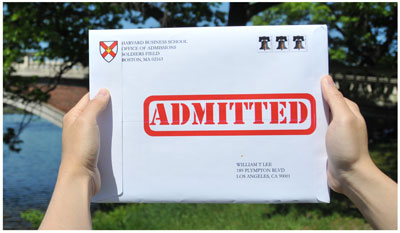
College in the US is expensive—too expensive, in fact, for the average student to be able to afford on their own. According to the National Center for Education Statistics, 87% of first-year students at four-year colleges were receiving financial aid in 2019-2020. Financial aid is good in all its forms, right? If it helps college students afford their education, what could be the problem?
Unfortunately, not all financial aid is created equal—and not all schools can afford to give out “good” student aid. Here, I’ll briefly talk about the types of financial aid available (the “good” kinds and the “bad” kinds) before introducing the colleges with the best financial aid programs in the country.
Financial Aid Basics: The Good, the Bad, and the Ugly
Financial aid comes from a variety of sources and in a variety of forms. Ultimately, all this money is meant to cover your college expenses, which include tuition and fees, room and board, transportation, and personal expenses.
Your total cost of attendance will vary depending on where you’re planning on going to school. You can get more detailed information on all these costs in our guide to college expenses.
So what counts as financial aid? There are three main types of aid you should be aware of:
#1: Grants are sums of money you don’t have to pay back. They’re usually awarded based on financial need. Grants can come from the federal government or from your school.
#2: Loans are sums of money you borrow to fund your education. You pay back these sums after graduation, in addition to paying back interest charges. In the end, you pay back more than you borrow. Loans can come from the federal government (such as Direct loans) or from a private lender, such as a bank.
#3: Like grants, scholarships are sums of money you don’t have to pay back. They can come from private sources (such as corporations) or from your school. They can be awarded based on merit only or based on a combination of merit and financial need. Athletic scholarships and academic merit scholarships are sometimes awarded by schools to extremely competitive applicants. These awards are given to entice students to accept an offer of admission; financial need isn’t necessarily considered in these cases.
Now that you know about the different forms of financial aid, we can talk about what aid types are more helpful than others.

These types of aid won’t always be wrong for everyone—but they shouldn’t be your first resort.
What Is “Bad” Financial Aid?
I define bad financial aid as aid that’s a good short-term solution but burdensome in the long term.
Financial aid packages are less appealing when they offer the majority of their financial aid in the form of loans. What this means is that you’re still responsible for those college expenses—you’ll just have to pay them after you graduate instead of right now.
You’re also responsible for interest charges, which are especially high when loans have high interest rates and/or are unsubsidized.
Private Loans
Private loans are not included in schools’ financial aid packages because the loan lenders are banks, not the schools. If your out-of-pocket cost is too high (i.e., if grants/scholarships don’t cover enough of your college expenses), you might consider turning to student loans to cover the difference.
Private loans might be viable financial options for some students. I’m not saying that private loans are evil and that no one should ever take out student loans from banks. They should, however, be the last option you consider after grants, scholarships, and low-interest/subsidized loans.
A “Bad” Financial Aid Package
Less desirable financial aid packages will contain mostly loans, particularly high-interest loans. In these cases, a school can’t or won’t cover a student’s unmet need, so the onus to find funding is put on the student. What this usually means is that the student has to take out loans to cover the cost of his or her education.
The average student debt for graduates of four-year bachelor’s programs in the US is about $28,950. For some students, even this average debt amount might seem unmanageable.

These aid options tend to be better options; they’re more sustainable in the long run.
What Is “Good” Financial Aid?
I define good financial aid as aid that’s a helpful and sustainable financial solution for both the short and long term. Basically, good financial aid enables you to afford the education you need without hindering you professionally, financially, or personally after you graduate.
Here are examples of aid that fit this definition:
Grants
Any free money is good money. Because you don’t have to pay back any money you receive from grants, this award type won’t hinder you in any way after you graduate.
Like I mentioned earlier, grants can come from both public and private sources. Check out our Pell Grant guide to learn more about federal grant options.
Scholarships
Scholarships are similar to grants. Because they’re essentially free money, you won’t have to worry about repayment at any point.
The major difference between grants and scholarships is that scholarship applicants are almost always evaluated on merit, even if the scholarship is need-based.
To get started with your own scholarship search, check out our guides to top awards for high school juniors and high school seniors.
Low-Interest Loans
The bad news: loans aren’t as fun as grants or scholarships. You have to pay back the money + interest.
The good news: loans can still be viable and manageable solutions for students who can’t afford a school’s net price after any grants or scholarships.
What makes a loan a good financial option? Low-interest rates, primarily. Many federal loan programs have low-interest rates, including Direct loans. You might be able to get private loans with low-interest rates if you have good credit. Generally, though, federal loans are better financial options.
Learn more about federal Direct Subsidized and Direct Unsubsidized loans with our guides.
Subsidized Loans
Subsidized loans can save you some serious money in the long run because they don’t accrue interest while you’re in school and for six to 10 months after you graduate. See exactly how much money you’ll save with a subsidized versus unsubsidized loan.
A “Good” Financial Aid Package
Ultimately, good financial aid packages are made up of a healthy percentage of grants and/or scholarships. If loans are included, they’ll be low interest (5% or less) and might even be subsidized. They’ll cover some of your financial need and maybe throw a scholarship or grant your way.
The best financial aid packages will cover all your financial need. What this means is that the school itself funds your education after any federal grants without making you take out loans.
In the next section, you’ll get a list of schools that claim to meet all their students’ financial need—the best kind of financial aid.

Want to build the best possible college application?
We can help. PrepScholar Admissions is the world’s best admissions consulting service. We combine world-class admissions counselors with our data-driven, proprietary admissions strategies. We’ve overseen thousands of students get into their top choice schools, from state colleges to the Ivy League.
We know what kinds of students colleges want to admit. We want to get you admitted to your dream schools.
Learn more about PrepScholar Admissions to maximize your chance of getting in.


36 Colleges With the Best Financial Aid
In this section, we give you a list of schools that claim to meet all their students’ financial need without having them take out any loans. What that means is that your family will only be asked to pay what they can afford, and the school will cover the rest of the costs with their institutional financial aid funding.
Many of these schools are need-blind, which means your financial status will have no bearing on your admission result.
You don’t necessarily need to be low-income to have all your financial need met. For example, Harvard doesn’t ask for any contribution if family income is less than $75,000, and families will only need to contribute up to 10% of their income if they make between $75,000 and $150,000. Aid amounts operate on a sliding scale for families that make more than $150,000.
Students with the most financial need tend to get the most aid because many of these schools’ financial aid initiatives are based on removing barriers to college access based on finances.
If you’re interested in any of the schools below, just click the link to get information on admissions requirements:
| School | Location | Financial Aid Notes |
| Amherst College | Amherst, MA | Need-blind. From website: “Nearly 60% of our students receive financial aid…75% of Amherst graduates in the Class of 2021 graduated with no student loan debt.”” |
| Bowdoin College | Brunswick, ME | Need-blind. From website: “Nearly half of our enrolled students receive scholarship assistance.” |
| Brown University | Providence, RI | From website: “Families with a total annual income equal to or below $125,000, that have typical assets for their income level, may be eligible for funding that covers the full cost of tuition. As such, for those that qualify, the amount of University Scholarship, federal and state grants, and outside resources will be at a level that ensures the total is equal to the cost of tuition (does not include fees, housing, and meals).” |
| Colby College | Waterville, ME | From website: “Students who do not complete an aid application for Colby institutional aid prior to admission will not be considered for College grant assistance for two award years, unless there have been substantial changes to family financial circumstances.” |
| College of the Ozarks | Point Lookout, MO | Offers a combination of work-study opportunities and state and federal grants to cover the cost of education. |
| Columbia University | New York, NY | Need-blind. From website: “For students coming from families with calculated total incomes of less than $66,000 annually (and typical assets), parents are not expected to contribute to the cost of attendance.” |
| Cornell University | Ithaca, NY | From website: “Cornell guarantees that any family with a total income of less than $60,000, and total assets of less than $100,000 (including primary home equity), will have no parent contribution and no loans.” |
| Dartmouth College | Hanover, NH | Zero parent contribution and no loan for families with income below $65,000. |
| Davidson College | Davidson, NC | Need-blind. Around 51% of students receive need-based aid, and 70 percent receive aid from some source. |
| Duke University | Durham, NC | Need-blind. No loans if family income is less than $40,000 (sliding scale after that). |
| Grinnell College | Grinnell, Iowa | 100% demonstrated financial need met with no loans. Students contribute from student employment ($2500), work study ($2500), or savings. |
| Harvard University | Cambridge, MA | 1 in 5 students pays nothing to attend Harvard. |
| Haverford College | Haverford, PA | No loans if family income is less than $60,000. |
| Johns Hopkins University | Baltimore, MD | Need-blind. From website: “ability to pay is not considered as part of the admissions process…loan-free financial aid packages meet 100% of demonstrated financial need.” |
| Lehigh University | Bethlehem, PA | No loans if family income is less than $75,000 (sliding scale after that). Loans are capped at $5,000 per academic year. |
| MIT | Cambridge, MA | Need-blind. No loans if family income is less than $90,000. |
| Northwestern University | Evanston, IL | All financial aid packages are loan-free. |
| Pomona College | Claremont, CA | Need-blind. At Pomona, 57% of students receive need-based scholarship aid from the College. |
| Princeton University | Princeton, NJ | Need-blind. From website: “The average grant covers 100% of tuition.” |
| Rice University | Houston, TX | Aid is loan-free if your parents earn less than $200,000. Students whose parents make less than $75,000 will receive coverage for tuition, fees, room, and board, whereas those whose parents make between $75,000 and $140,000 will receive full coverage for tuition only. |
| Smith College | Northampton, MA | From website: “Beginning in the fall of 2022, Smith College has eliminated loans from its undergraduate financial aid packages for students receiving need-based institutional grants and has replaced the loan amount with grants from the college.” |
| Stanford University | Stanford, CA | Need-blind. From website: “More than 55% [of students] receive aid from Stanford, including athletic scholarships.” |
| Swarthmore College | Swarthmore, PA | Need-blind. At Swarthmore, 55% of students received financial aid in 2019-2020. |
| Texas A&M University | College Station, TX | From website: “For students whose family income is $60,000 or less, tuition will be covered by grants and/or scholarships.” |
| Tufts University | Medford, MA | From website: Students with annual family incomes of less than $60,000 will typically receive a financial aid package that includes no student loans. In these cases, Tufts will meet 100% of demonstrated need with only grant aid and work study funding. |
| University of Chicago | Chicago, IL | Need-blind. From website: “Free tuition for families with incomes under $125,000 per year (with typical assets), while families earning less than $60,000 (with typical assets) will have tuition, fees, and room and board covered by financial aid.” |
| UNC Chapel Hill | Chapel Hill, NC | Low-income North Carolina students may qualify for aid without loans through the Carolina Covenant. |
| University of Illinois, Urbana-Champaign | Urbana, IL | From website: If you’re an Illinois resident whose family makes $67,100 or less, you may be eligible for the Illinois Commitment financial aid package, which covers the cost of tuition and campus fees. |
| University of Notre Dame | Notre Dame, IN | Need-blind. In 2020, the median need-based scholarship given to first-year students was $50,000. |
| University of Pennsylvania | Philadelphia, PA | The average aid package for students in 2020-2021 was $56,095. |
| University of Richmond | Richmond, VA | Need-blind. In addition to need-based aid, “all first-year applicants are considered for merit-based aid, including full-tuition scholarships and a variety of interest-based programs.” |
| Vanderbilt University | Nashville, TN | Need-blind. Financial aid awards do not include loans. |
| Vassar College | Poughkeepsie, NY | Need-blind. No or limited loans for low-income families. |
| Washington and Lee University | Lexington, VA | Merit scholarships are available. In 2021, more than half the entering class received a W&L grant or scholarship with an average award of more than $50,000. |
| Washington University in St. Louis | St. Louis, MO | No loans if family income is less than $75,000. |
| Wellesley College | Wellesley, MA | From website: “Wellesley’s financial aid policy eliminates loans for Wellesley students who have the greatest financial need and for whom debt after graduation can be an issue. It lowers loan packages by one-third for many other students.” |
| Williams College |
Williamstown, MA |
From website: “Williams meets 100 percent of demonstrated need, with no loans or work-study expectation. And we’re one of only a few colleges in the country that guarantees free textbooks and course materials to all students receiving financial aid.” |
| Yale University | New Haven, CT | From website: “Families whose total gross income is less than $75,000 (with typical assets) are not expected to make a financial contribution towards their child’s Yale education.” |
Why Do These Schools Offer the Best Financial Aid?
You might have noticed that the schools in the table above are all pretty competitive private institutions. These private schools tend to be pretty elite, with strong alumni networks. Successful alumni tend to donate more to their alma maters, leading to more financial aid funding and better financial aid programs.
They might have higher sticker prices than many public schools, but they tend to be less expensive for many students due to their financial aid programs.
Many of the above schools only offer need-based aid. They don’t offer merit-based scholarships because, as I mentioned earlier, their financial aid initiatives focus mainly on removing barriers to education access. They don’t have to offer merit-based scholarships to entice applicants because their applicant pool is already so strong.
What If You’re Not Eligible for Need-Based Aid? 2 Alternatives
Some students might want to seek out financial aid even if they aren’t eligible for many need-based programs. If you’re one of these students, there’s one important thing you need to know: if financial aid isn’t need-based, then it’s merit-based.
There are a couple of ways you can earn money for college regardless of financial need.
#1: Apply for Merit-Based Scholarships
Many scholarship programs don’t consider applicants’ financial need at all when giving out awards.
Start your scholarship search with our guide to awards for high school seniors. Read over eligibility requirements carefully to make sure financial need isn’t taken into account.
#2: Apply to Schools Where Merit-Based Aid Is Common
Few public universities or top private schools offer large amounts of merit-based aid—public universities can’t afford to, and top private schools don’t have to.
That being said, there are schools where merit aid is much more common. These schools use merit-based aid to stay competitive by attracting strong applicants.
The following schools tend to award merit aid to a high percentage (45% or higher) of students:
What’s Next?
Now that you know where to send in your college applications, you can start putting together a strategy for your financial aid applications. For an overview of the financial aid process, check out our simple guide to applying for financial aid.
Already got a financial aid strategy? Then learn how to submit your FAFSA.
Looking for other ways to attend college without having to take out loans? Check out these amazing full-ride scholarships you could win!
Want to improve your SAT score by 160 points or your ACT score by 4 points? We’ve written a guide for each test about the top 5 strategies you must be using to have a shot at improving your score. Download it for free now:


Source: blog.prepscholar.com